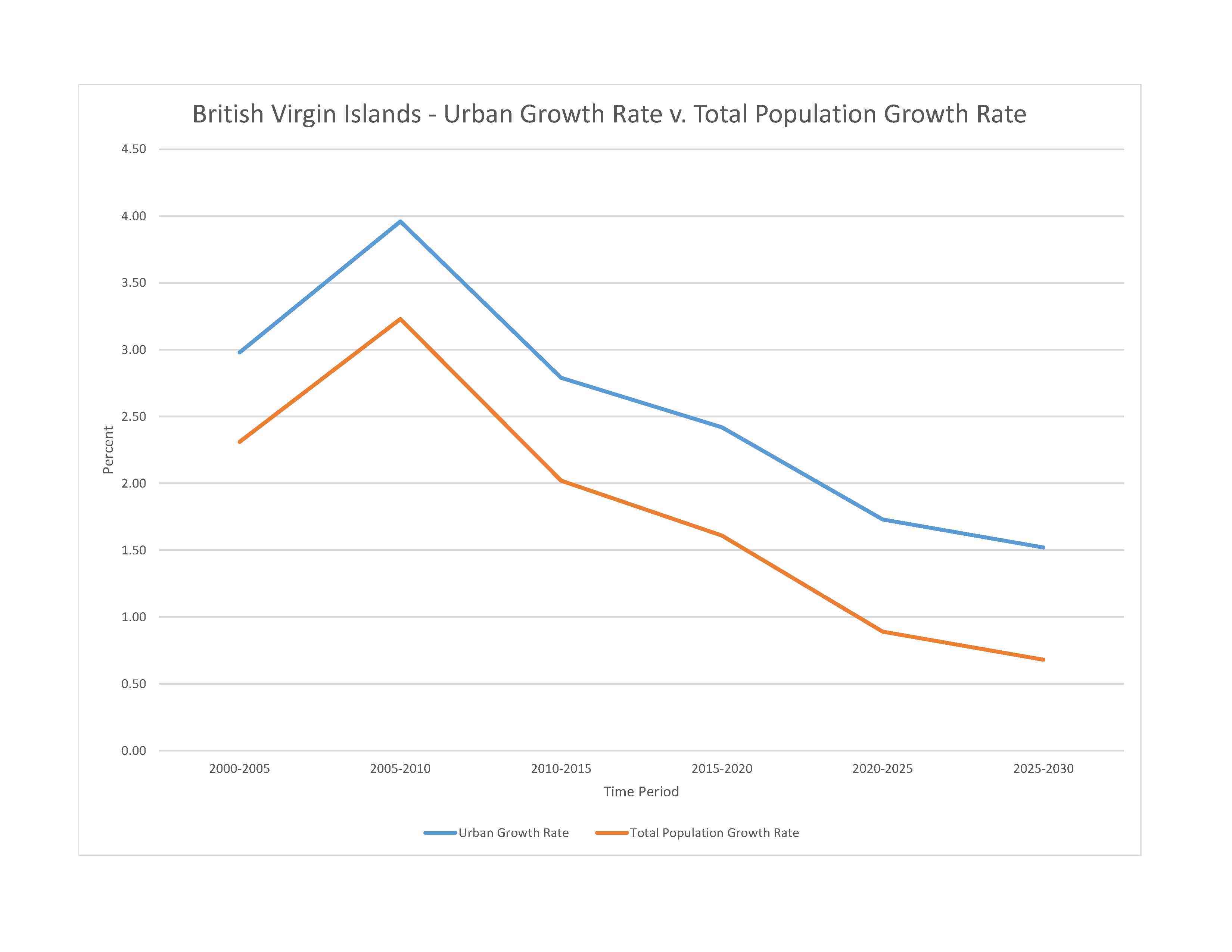
limited natural freshwater resources except for a few seasonal streams and springs on Tortola; most of the islands' water supply comes from desalination plants; sewage and mining/industry waste contribute to water pollution, threatening coral reefs
subtropical; humid; temperatures moderated by trade winds
agricultural land: 46.7% (2018 est.)
arable land: 6.7% (2018 est.)
permanent crops: 6.7% (2018 est.)
permanent pasture: 33.3% (2018 est.)
forest: 24.3% (2018 est.)
other: 29% (2018 est.)
urban population: 49.7% of total population (2023)
rate of urbanization: 1.73% annual rate of change (2020-25 est.)

carbon dioxide emissions: 0.21 megatons (2016 est.)
municipal solid waste generated annually: 21,099 tons (2000 est.)
NOTE: The information regarding British Virgin Islands on this page is re-published from the 2024 World Fact Book of the United States Central Intelligence Agency and other sources. No claims are made regarding the accuracy of British Virgin Islands 2024 information contained here. All suggestions for corrections of any errors about British Virgin Islands 2024 should be addressed to the CIA or the source cited on each page.
This page was last modified 04 May 24, Copyright © 2024 ITA all rights reserved.